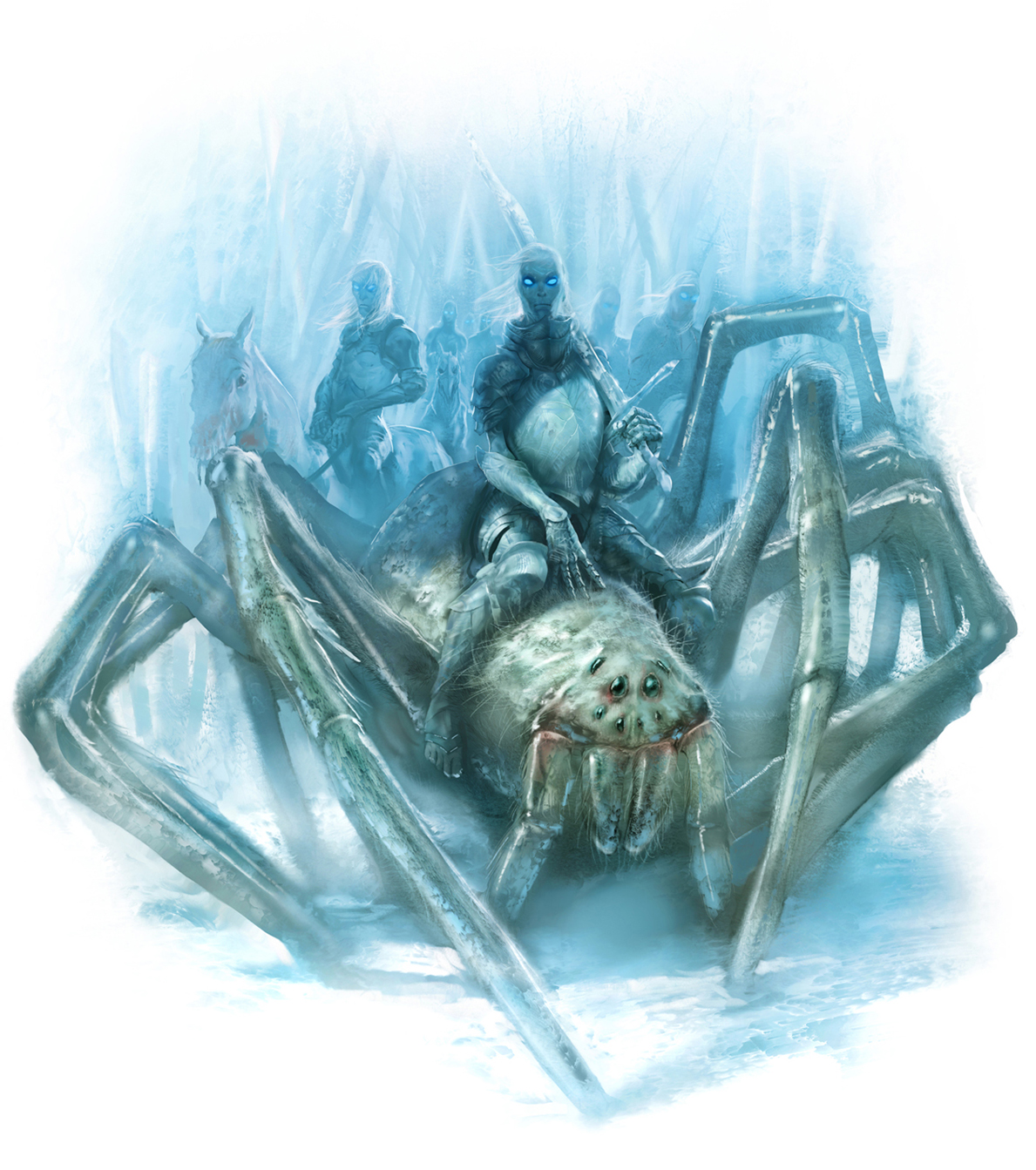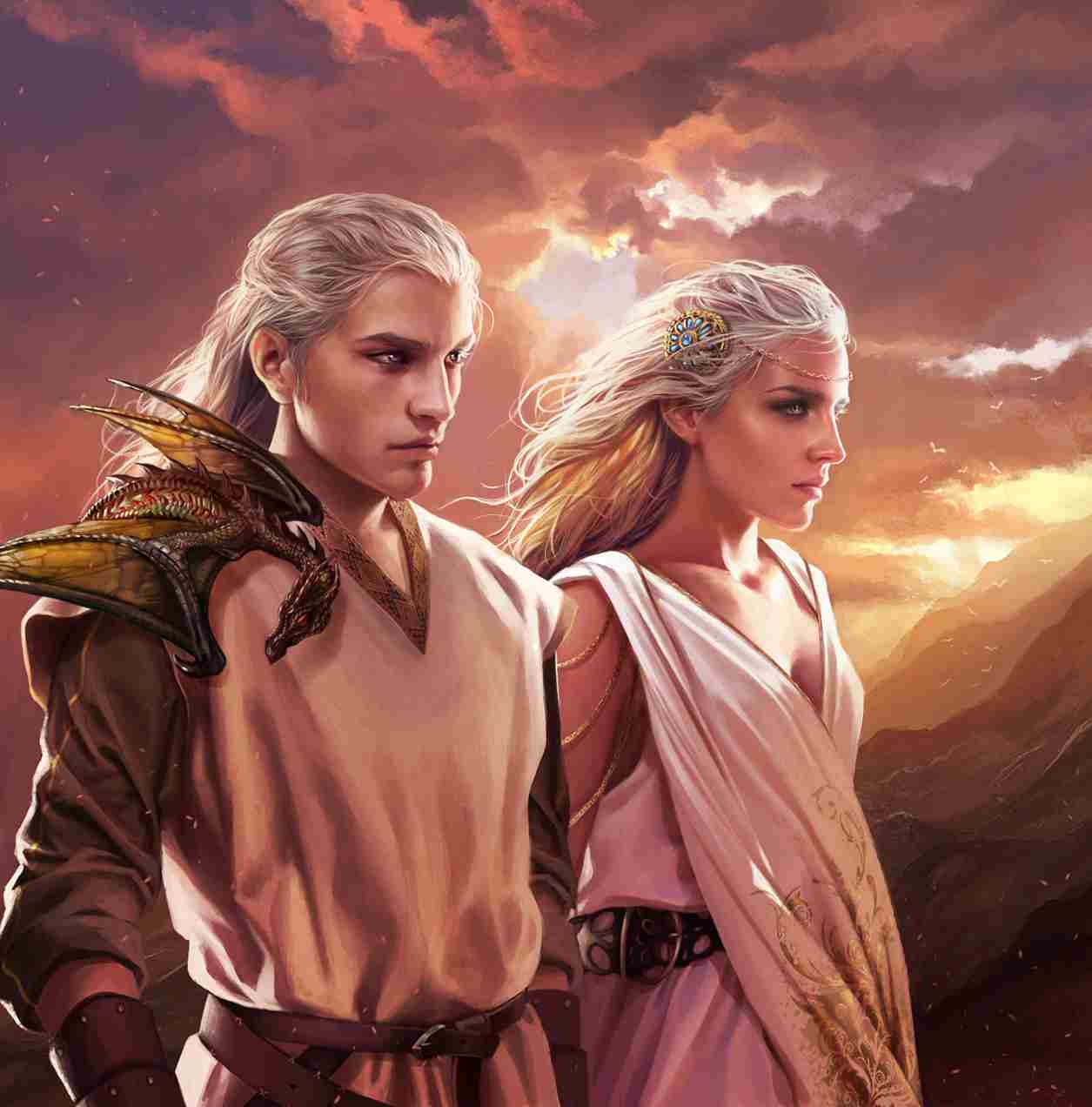




AS THE FIRST MEN established their realms following the Pact, little troubled them save their own feuds and wars, or so the histories tell us. It is also from these histories that we learn of the Long Night, when a season of winter came that lasted a generation—a generation in which children were born, grew into adulthood, and in many cases died without ever seeing the spring. Indeed, some of the old wives’ tales say that they never even beheld the light of day, so complete was the winter that fell on the world. While this last may well be no more than fancy, the fact that some cataclysm took place many thousands of years ago seems certain. Lomas Longstrider, in his Wonders Made by Man , recounts meeting descendants of the Rhoynar in the ruins of the festival city of Chroyane who have tales of a darkness that made the Rhoyne dwindle and disappear, her waters frozen as far south as the joining of the Selhoru. According to these tales, the return of the sun came only when a hero convinced Mother Rhoyne’s many children—lesser gods such as the Crab King and the Old Man of the River—to put aside their bickering and join together to sing a secret song that brought back the day.
It is also written that there are annals in Asshai of such a darkness, and of a hero who fought against it with a red sword. His deeds are said to have been performed before the rise of Valyria, in the earliest age when Old Ghis was first forming its empire. This legend has spread west from Asshai, and the followers of R’hllor claim that this hero was named Azor Ahai, and prophesy his return. In the Jade Compendium, Colloquo Votar recounts a curious legend from Yi Ti, which states that the sun hid its face from the earth for a lifetime, ashamed at something none could discover, and that disaster was averted only by the deeds of a woman with a monkey’s tail.

T hough the Citadel has long sought to learn the manner by which it may predict the length and change of seasons, all efforts have been confounded. Septon Barth appeared to argue, in a fragmentary treatise, that the inconstancy of the seasons was a matter of magical art rather than trustworthy knowledge. Maester Nicol’s The Measure of the Days —otherwise a laudable work containing much of use—seems influenced by this argument. Based upon his work on the movement of stars in the firmament, Nicol argues unconvincingly that the seasons might once have been of a regular length, determined solely by the way in which the globe faces the sun in its heavenly course. The notion behind it seems true enough—that the lengthening and shortening of days, if more regular, would have led to more regular seasons—but he could find no evidence that such was ever the case, beyond the most ancient of tales.

However, if this fell winter did take place, as the tales say, the privation would have been terrible to behold. During the hardest winters, it is customary for the oldest and most infirm amongst the northmen to claim they are going out hunting—knowing full well they will never return and thus leaving a little more food for those likelier to survive. Doubtless this practice was common during the Long Night.
Yet there are other tales—harder to credit and yet more central to the old histories—about creatures known as the Others. According to these tales, they came from the frozen Land of Always Winter, bringing the cold and darkness with them as they sought to extinguish all light and warmth. The tales go on to say they rode monstrous ice spiders and the horses of the dead, resurrected to serve them, just as they resurrected dead men to fight on their behalf.

The Others mounted on ice spiders and dead horses, as the legends claim. ( illustration credit 15 )
How the Long Night came to an end is a matter of legend, as all such matters of the distant past have become. In the North, they tell of a last hero who sought out the intercession of the children of the forest, his companions abandoning him or dying one by one as they faced ravenous giants, cold servants, and the Others themselves. Alone he finally reached the children, despite the efforts of the white walkers, and all the tales agree this was a turning point. Thanks to the children, the first men of the Night’s Watch banded together and were able to fight—and win—the Battle for the Dawn: the last battle that broke the endless winter and sent the Others fleeing to the icy north. Now, six thousand years later (or eight thousand as True History puts forward), the Wall made to defend the realms of men is still manned by the sworn brothers of the Night’s Watch, and neither the Others nor the children have been seen in many centuries.

A rchmaester Fomas’s Lies of the Ancients —though little regarded these days for its erroneous claims regarding the founding of Valyria and certain lineal claims in the Reach and westerlands—does speculate that the Others of legend were nothing more than a tribe of the First Men, ancestors of the wildlings, that had established itself in the far north. Because of the Long Night, these early wildlings were then pressured to begin a wave of conquests to the south. That they became monstrous in the tales told thereafter, according to Fomas, reflects the desire of the Night’s Watch and the Starks to give themselves a more heroic identity as saviors of mankind, and not merely the beneficiaries of a struggle over dominion.


The dragonlords of Valyria. ( illustration credit 16 )